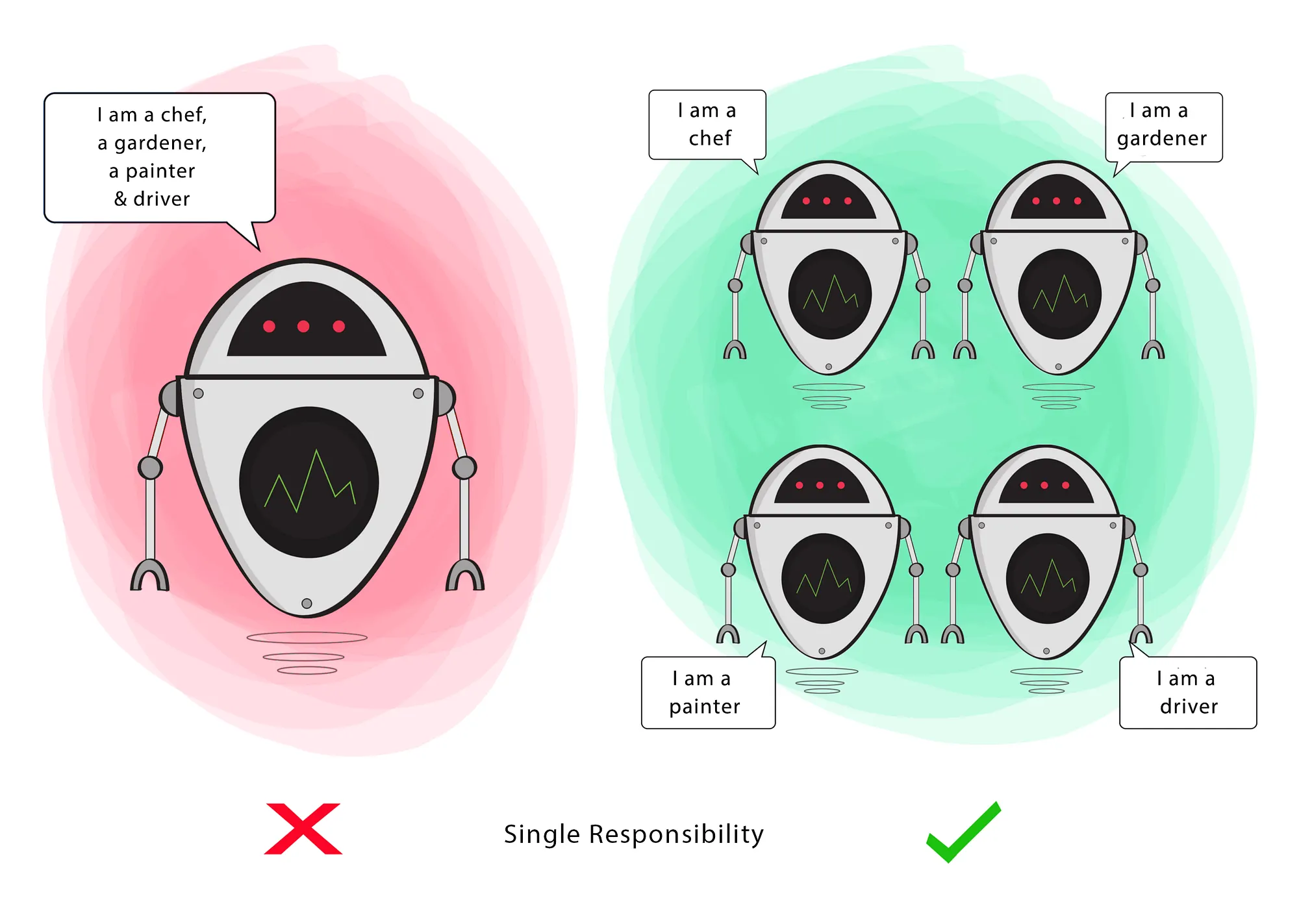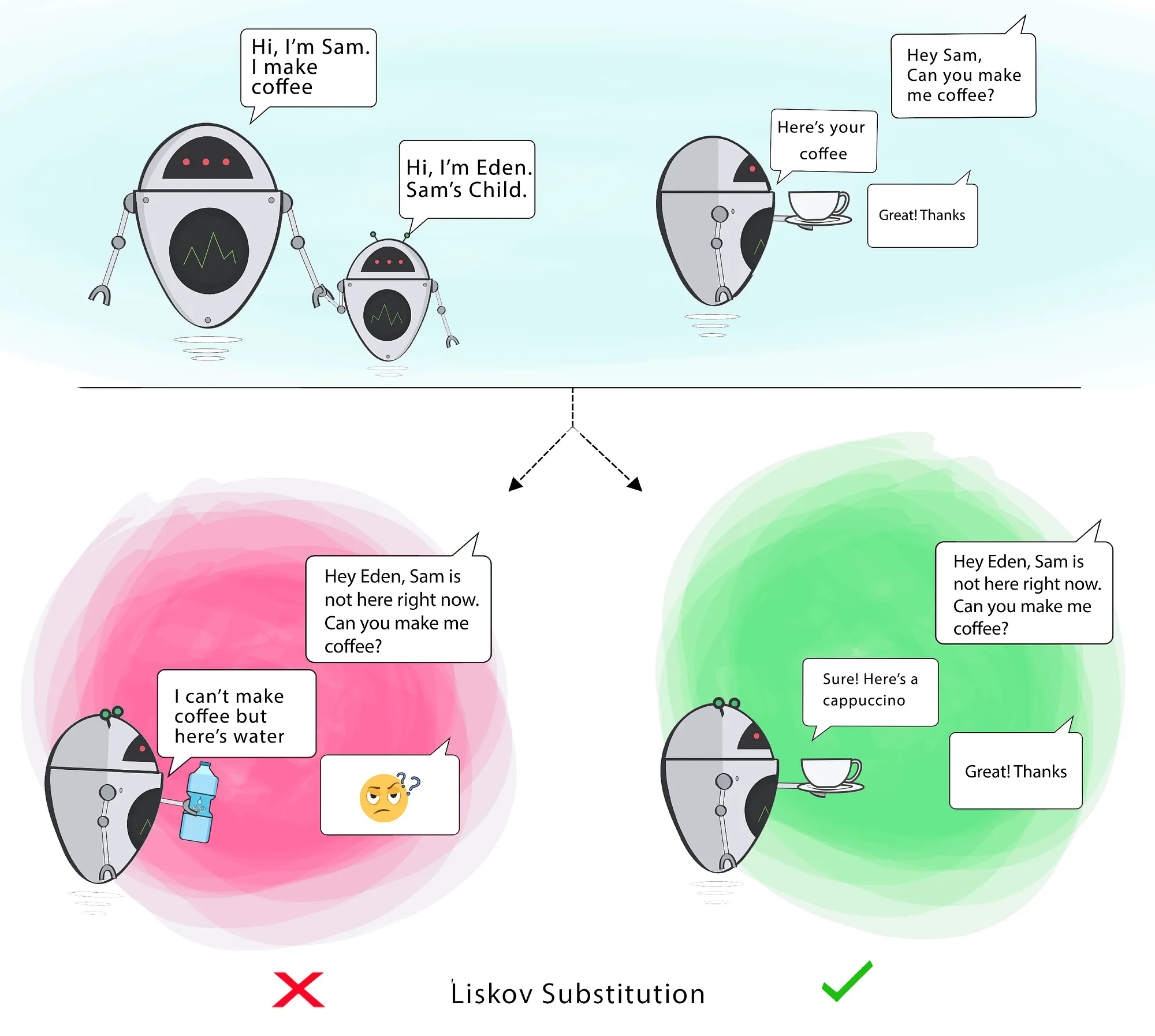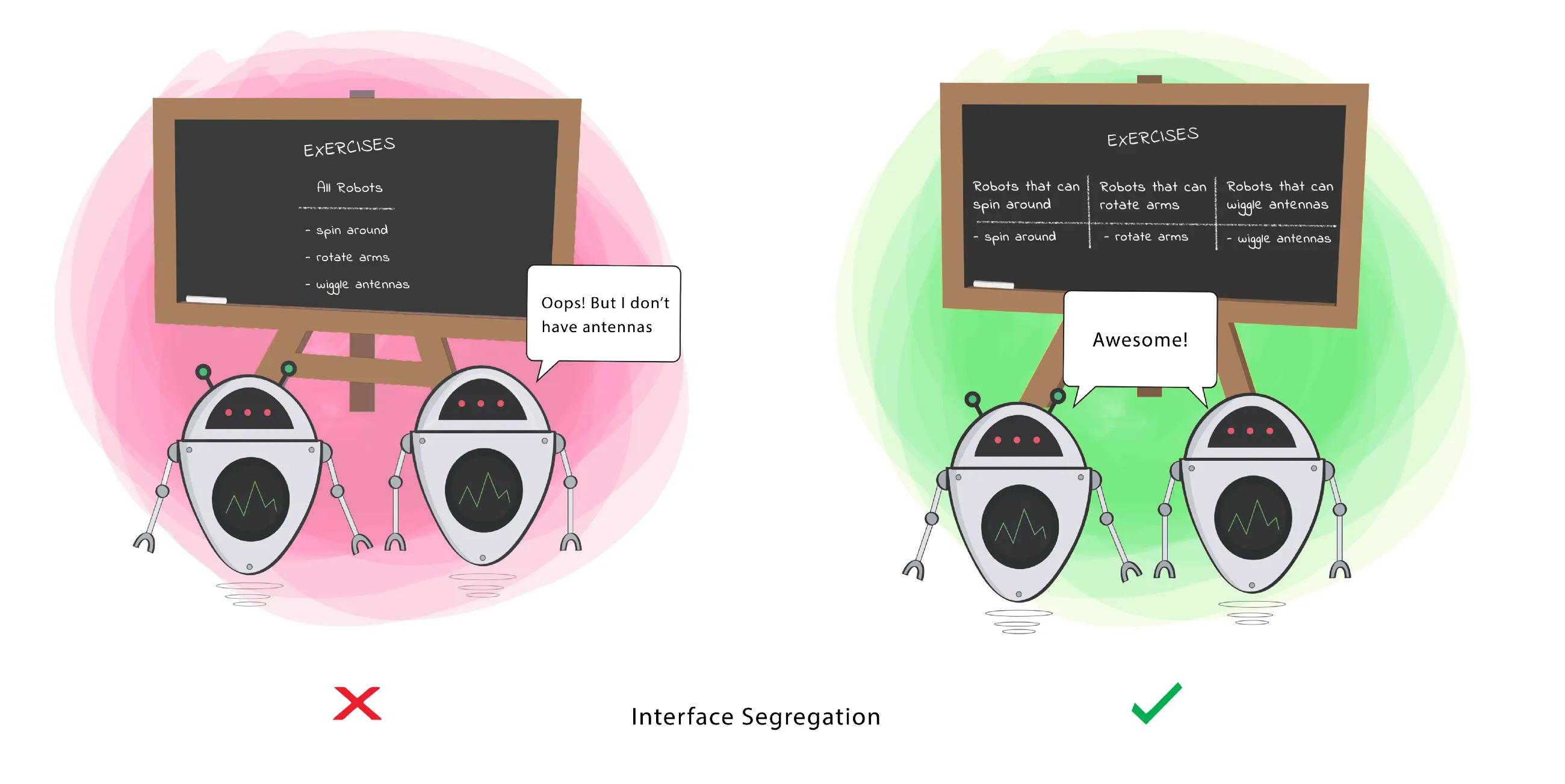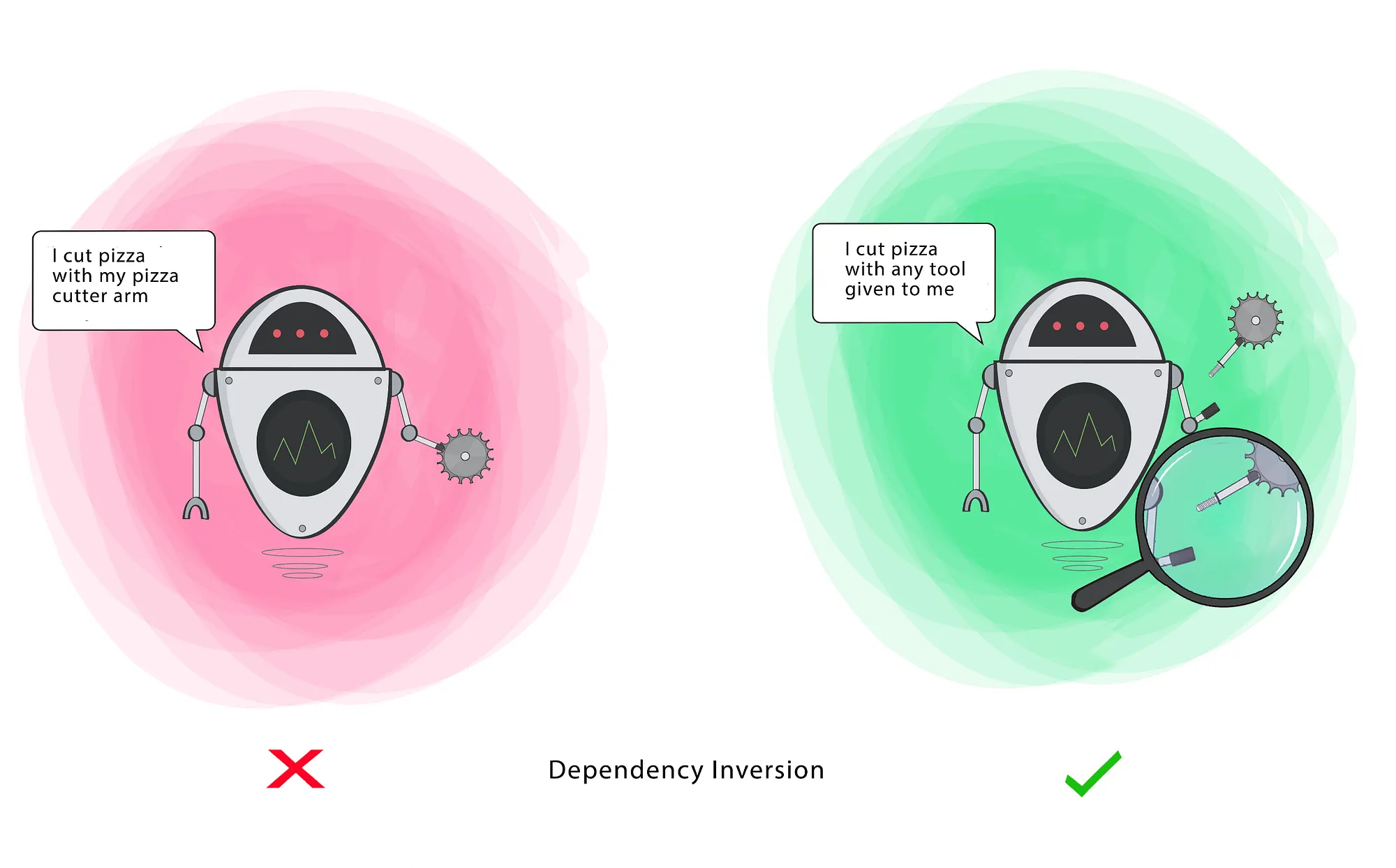SOLID Principles
Martin published the SOLID principles in the early 2000s. They are intended to provide guidelines on how to arrange functions and data structures into classes.
The goals of SOLID are the creation of mid-level software structures that:
- Tolerate change,
- Are easy to understand, and
- Are the basis of components that can be used in many software systems.
class does not imply that these principles are applicable only to object-oriented software”. This feels a little revisionist, although I agree that we should be looking to apply design concepts beyond OO/classes.1. Single Responsibility
“A module should be responsible to one, and only one, user or stakeholder.” – Martin (2002)
“An active corollary to Conway’s law: The best structure for a software system is heavily influenced by the social structure of the organization that uses it so that each software module has one, and only one, reason to change.” – Martin (2019)
The Single Responsibility Principle (SRP) states that we want classes to do a single thing. This is meant to ensure that are classes are focused, but also to reduce pressure to expand or change that class. In other words:
- A class has responsibility over a single functionality.
- There is only one single reason for a class to change.
- There should only be one “driver” of change for a module.

2. Open-Closed Principle
“A software artifact should be open for extension but closed for modification. In other words, the behaviour of a software artifact ought to be extensible, without having to modify that artifact.” – Bertrand Meyers (1988)
For software systems to be easy to change, they must be designed to allow the behavior of those systems to be changed by adding new code, rather than modifying existing code.
This principle is often used to champion subclassing as the primary form of code reuse.

3. Liskov-Substitution Principle
“If for each object o1 of type S there is an object o2 of type T such that for all programs P defined in terms of T, the behaviour of P is unchanged when o1 is substituted for o2, then S is a subtype of T.” – Barbara Liskov (1988)
To build software systems from interchangeable parts, those parts must adhere to a contract that allows those parts to be substituted one for another.
in OO programming, it should be possible to substitute a derived class for a base class, since the derived class should still be capable of all the base class functionality. In other words, a child should always be able to substitute for its parent.

4. Interface Segregation Principle
“This principle advises software designers to avoid depending on things that they don’t use. - Martin (2019)
Also described as “program to an interface, not an implementation.” Never make assumptions about an implementation. Allow flexibility, and the ability to substitute other valid implementations that meet the functional needs.

5. Dependency Inversion Principle
The most flexible systems are those in which source code dependencies refer to abstractions (interfaces) rather than concretions (implementations). This reduces the dependency between these two classes.
- High-level modules should not import from low-level modules. Both should depend on abstractions (e.g., interfaces).
- Abstractions should not depend on details. Details (concrete implementations) should depend on abstractions.
